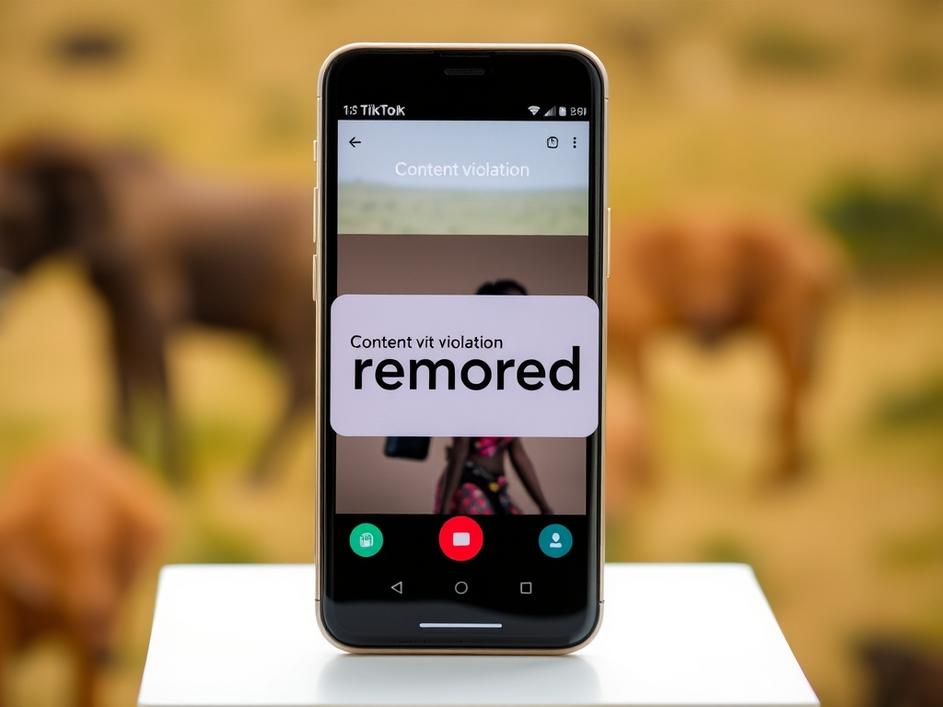


We are a digital agency helping businesses develop immersive, engaging, and user-focused web, app, and software solutions.
2310 Mira Vista Ave
Montrose, CA 91020
2500+ reviews based on client feedback

TikTok is huge, we all know that. It”‘s a place where trends start, voices get heard, and people from all walks of life share their stories, their art, and their funny moments. In Kenya, just like everywhere else, the app has really taken off. You see everyone from students to entrepreneurs, artists to politicians, all making videos and trying to connect. It”‘s a vibrant digital space, full of energy and creativity. But recently, TikTok shared some big news that makes us pause and think about what it takes to keep these online spaces safe and welcoming for everyone. They announced that a massive number of videos made in Kenya got removed from the platform in just three months. This isn”‘t just a number; it tells a story about content creation, platform rules, and the fine line between free expression and harmful material in our digital world.
\n\n
What's Included?
Toggle\n
So, what”‘s the actual news? TikTok revealed that between April and June of this year, they pulled down over half a million videos from their platform that originated from Kenya. That”‘s right, more than 500,000 videos. The reason? They all broke the platform”‘s community guidelines. Imagine that many videos disappearing in such a short time. It”‘s a huge figure, and it really shows just how much content is being created and, unfortunately, how much of it doesn”‘t meet the standards TikTok has set. For anyone who uses the app, or even just follows digital trends, this number should make you wonder: what kind of content are we talking about, and why were so many videos removed?
\n\n
\n
Every social media platform has rules, and TikTok is no different. These aren”‘t just picky suggestions; they are the backbone of how the platform tries to keep its users safe and create a positive experience. Think about it: if there were no rules, people could post anything they wanted. That could mean hate speech, bullying, misinformation, scams, graphic content, or even things that encourage self-harm. Nobody wants to scroll through upsetting or dangerous material. So, these community guidelines are designed to prevent that. They outline what”‘s allowed and what”‘s not, trying to strike a balance so people can be creative but also be responsible. The large number of removals suggests that either many creators are unaware of these rules, or they are pushing the boundaries, sometimes too far.
\n\n
\n
Kenya”‘s digital space is incredibly dynamic. More and more people are getting online, and platforms like TikTok offer an easy way to share and consume content. This rapid growth also means a diverse mix of users, some new to global platforms and their rules, others experimenting with different types of content. It”‘s possible that some of these guideline violations stem from misunderstandings of what”‘s acceptable on a global platform versus local cultural norms. What might be a joke among friends in a local context might not translate well or could even be offensive when viewed by a global audience or interpreted by a universal set of community standards. Also, as more people jump onto the platform, there’s naturally a higher volume of all kinds of content, including that which might be problematic. It”‘s a learning curve for creators and platforms alike to navigate this vibrant, yet sometimes challenging, digital frontier.
\n\n
\n
Moderating a platform as massive as TikTok is an incredibly complex job. Imagine the sheer volume of videos uploaded every single minute worldwide. To deal with this, TikTok uses a mix of artificial intelligence and human moderators. The AI can flag content that looks suspicious, but human eyes are often needed to make final decisions, especially when cultural context or nuanced language is involved. This report shows that TikTok is actively trying to enforce its rules in Kenya. But removing half a million videos also highlights the huge challenge they face. Is it a sign that their moderation is working well, catching a lot of bad stuff? Or is it a concerning indicator of how much problematic content is being created in the first place? It”‘s probably a bit of both. They are trying to keep up, but the flow of new content, some of it pushing boundaries, never stops. This ongoing battle for a safer online space demands constant effort from the platform”‘s side.
\n\n
\n
For content creators in Kenya, this news is a clear reminder: understanding TikTok”‘s community guidelines is not optional. If you”‘re putting effort into making videos, building an audience, or even trying to earn some money from your content, having your videos removed can be a real setback. Repeated violations can lead to temporary bans or even permanent removal from the platform. It”‘s a call to be more aware, more thoughtful, and more responsible about what you post. This doesn”‘t mean stifling creativity; it means channeling it in ways that are positive and respectful of others. It”‘s about embracing “digital citizenship,” where we all contribute to a healthier online environment, not just for ourselves but for the entire community.
\n\n
\n
The removal of over half a million Kenyan TikTok videos is a big moment for reflection. It reminds us that while social media offers amazing opportunities for connection and expression, it also comes with responsibilities. Platforms like TikTok have a huge job to do in protecting their users, but we, as content creators and consumers, also play a vital role. By understanding the rules, reporting harmful content, and thinking before we post, we can all contribute to making these digital spaces better. It”‘s an ongoing conversation, a continuous learning process for everyone involved. The goal is to keep TikTok, and indeed the internet, a vibrant place where creativity thrives, but where safety and respect are always at the forefront. This kind of transparency from TikTok helps us all understand the challenges and work together towards a more positive online future.



Leave a reply